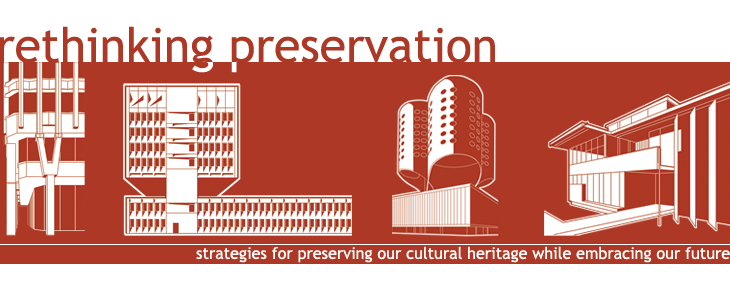
In his October 3rd New York Times column, architecture critic Nicolai Ouroussoff, writes about the plan by Ingenhoven Architects to transform the early century rail station in Stuttgart, Germany designed by Paul Bonatz. He calls the new design: “a callous disregard for architectural history. Its construction would require the partial destruction of one of the city’s most recognizable landmarks…” His main critique focuses on: “the preservation gesture of facadism — a favorite tactic of bureaucrats and developers in which a few architectural elements are preserved while the rest of a structure is bulldozed… [the] architecture is reduced to a picture postcard — an empty, superficial veneer… stripping it of the function that gave it meaning.” He goes onto say that if such facadist preservation persist: “it will lead to a cheapened, oversimplified view of history, one that suppresses the conflicts and contradictions that make cities vital.”  As far as fad of façade preservation goes, I couldn’t agree more. However, there are buildings for which the façade was designed devoid of function, and there are buildings, such as Paul Rudolph’s Blue Cross Blue Shield, in which the façade is the design. But it is true that too many buildings around the world have been gutted only to leave a falsified historical veneer facing the street while culture moves forward behind the veil – a nostalgic infatuation.
As far as fad of façade preservation goes, I couldn’t agree more. However, there are buildings for which the façade was designed devoid of function, and there are buildings, such as Paul Rudolph’s Blue Cross Blue Shield, in which the façade is the design. But it is true that too many buildings around the world have been gutted only to leave a falsified historical veneer facing the street while culture moves forward behind the veil – a nostalgic infatuation.
I cannot speak to the same distain as Mr. Ouroussoff for the new Stuttgart station design because I have not explored it in depth. A design solution which partially destroys an existing building, even significant landmarks, is not inherently bad or wrong. It is the reimplementation, the retention of historical memory and cultural awareness that must be thoughtful. With most historical properties privately owned, it is difficult to legally abolish change, but there are many thoughtful possibilities for preserving with change.
 As far as fad of façade preservation goes, I couldn’t agree more. However, there are buildings for which the façade was designed devoid of function, and there are buildings, such as Paul Rudolph’s Blue Cross Blue Shield, in which the façade is the design. But it is true that too many buildings around the world have been gutted only to leave a falsified historical veneer facing the street while culture moves forward behind the veil – a nostalgic infatuation.
As far as fad of façade preservation goes, I couldn’t agree more. However, there are buildings for which the façade was designed devoid of function, and there are buildings, such as Paul Rudolph’s Blue Cross Blue Shield, in which the façade is the design. But it is true that too many buildings around the world have been gutted only to leave a falsified historical veneer facing the street while culture moves forward behind the veil – a nostalgic infatuation.I cannot speak to the same distain as Mr. Ouroussoff for the new Stuttgart station design because I have not explored it in depth. A design solution which partially destroys an existing building, even significant landmarks, is not inherently bad or wrong. It is the reimplementation, the retention of historical memory and cultural awareness that must be thoughtful. With most historical properties privately owned, it is difficult to legally abolish change, but there are many thoughtful possibilities for preserving with change.




No comments:
Post a Comment